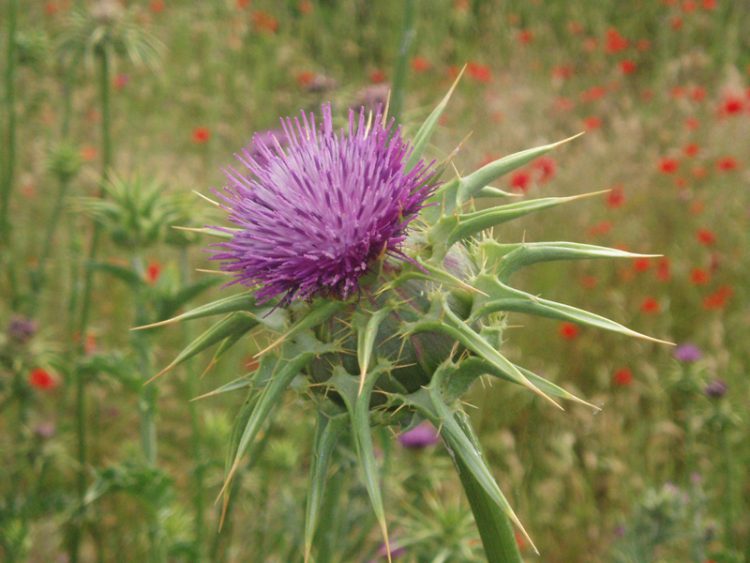Permaculture Design Exercise:
Noxious Weeds in Deary Idaho and What They Tell Us
Artemisia: Indicates soils high in potassium
Asters: Indicate alkaline soils, poor humus and poor drainage
Bindweed (Convulvulus arvensis): shows up when the soil is worked before it dries out. It is a sign of low humus and moist, poorly-drained soils
Burdock: Indicates too much fertilizer as it is a heavy feeder. It also grows in neglected soils.
Catchfly (Campion): Likes dry soil
Cheat Grass: Grows in dry, unattended drought situations.
Cinquefoil: Indicates very acid soil and land not cared for.
Clover, Red: Indicates soils high in potassium
Clover, Sweet Clover: Likes dry soil.
Cornelian Cherry: indicates soil high in limestone.
Crabgrass (Digitaria sanguinalis):
Foxglove: Grows in low lime soil.
Goldenrod: Indicates dry sandy soil poor in humus and poor drainage.
Hawkweed, Yellow (Hieracium caespitosum): Indicates slightly acid soils.
Hawkweeds, Orange or Devil’s Paintbrush (Hieracium aurantiacum): Indicates acid soil.
Hounds Tongue (Cynoglossum officinalis): Is tap-rooted and in the Borage family this weed has a bad odor and nauseating taste.
Knapweed (Centaurea nigrescens): Indicates very acid soil high in potassium. The more red the flower, the more acid the soil.
Knotweed, Prostrate: Indicates slightly acid and hardpan soil.
Lambsquarter (Dung weed) (Chenopodium): Indicates high organic soils with increased phosphorus.
Marsh Mallows indicate high potassium in the soil.
Milium (Milium vernale):
Milkweed (Asclepias): indicates moist soil area.
Mullein: grows in disturbed unattended soils low in lime.
Oxeye Daisy (Leucanthemum vulgare): Indicates insufficient cultivation and acid soil. A plant to watch for as it’s a first indicator of your soil headed into an acid pH. It likes sour (acid) soil with excess iron.
Pansy: Grows in low lime areas.
Pigweed: Likes dry soil.
Plantains: Indicated moist compaction areas.
Purslane: Indicates high K/Mg/Cu/Fe a pH imbalance.
Quack grass (Agrophyron repens): Grows in clumpy soil (so the ground was tilled when wet).
Saint John’s Wort (Hypericum perforatum): Indicates dry, neglected soil low in nitrogen.
Shepherd’s Purse: Indicates salty soil.
Smart Weed: Indicates poorly drained soil low in calcium/phosphorus/magnesium and high in potassium.
Sorrel/Docks: Indicate acid soil low in lime.
Spurge, Leafy: (Euphorbia esula) Likes dry, light, sandy soil. Used as a wart remedy.
Stinging Nettles: Indicate lots of compost.
Thistle, Bull (Circium lanceolatum): High in protein as all thistles are but too stickery to eat. Indicates Low calcium, iron soils and manganese deficiency. In Old English times people used to be hired to do cut-spudding and feed the fodder to cattle.
Thistle, Canada (Circium arvense): Rich in potassium so good for the compost pile. If you cut the blossoms just after they have been pollinated the plant bleeds to death. If you cut the tops off before pollination the root growth really takes off and it spreads. They indicate iron and copper deficiency but also grow in manganese deficient soil (alkaline pH–so clay soil). If you decide to treat the area for manganese deficiency, be sure to wear a mask. That stuff is toxic to your lungs!
White Top (Cardaria draba): Indicates lack of attention/cultivation and improper calcium levels in the soil.
Other notes on noxious weeds:
• Acid soils are associated with anaerobic activity with low porosity
• Compost is usually low in potassium so add thistle and mallows to your heap.
• Lime will increase the pH of the soil
• Indicators: Aspen grow where avalanches happen
• Indicators: Cattle strip bark and defoliate trees if pasture is too high in nitrogen
• Indicators: Lush healthy meadow is a balanced happy area
• Indicators: Poisonous, tough, spiky plants indicate over foraging
• Compost will fix most things.
Helpful links and References on Noxious Weeds and What They Tell Us:
• Book: Weeds and What They Tell Us by Ehrenfried E Pfeiffer
• Book: Weed Control Without Poisons by Charles Walters Jr.

